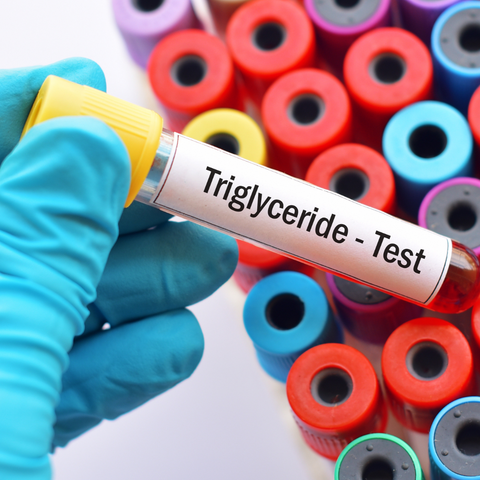What are Triglycerides?

🎧 On the go? Listen to this episode on The GOOD IDEA Audio Blog, available on Spotify or Apple Podcasts.

A visit to the doctor’s office, especially if it involves lab work, should provide us with the knowledge we need to make changes that improve our health. Unfortunately, sometimes the labs can be so plentiful or complex that we become overwhelmed or don’t know how to interpret the results. We are here to help demystify some common health measures so you can understand what these tests are used to predict and what they mean for your health. We previously covered fasting blood sugar, cholesterol, A1c, blood pressure, insulin, and basal metabolic rate. Today, we tackle triglycerides.
What are Triglycerides?

You may recognize the word “triglycerides” from a recent lab test order by your doctor. A typical lipid panel includes both cholesterol and triglyceride measures (they’re both types of fats). The measurement of LDL cholesterol and triglycerides together provides us with a person’s risk of heart attack or stroke.
Triglycerides are a type of fat (lipid) found in your blood. They are composed of three fatty acid molecules attached to a glycerol molecule. Triglycerides are the most common type of fat in the body and serve as a source of energy. They are obtained through the food we eat, especially from dietary fats and carbohydrates.
What do triglycerides do?
In the body, triglycerides have several important functions:
- Energy Storage: Excess calories that the body doesn't need immediately are converted into triglycerides and stored in fat cells. When the body needs energy between meals, hormones release these stored triglycerides for energy.
- Insulation: Triglycerides stored in fat cells also act as insulation to help regulate body temperature.
- Protection: Triglycerides provide a cushioning effect and protect organs from injury.
Triglyceride levels are often measured as part of a cholesterol blood panel, which is a routine blood test to assess heart health. While cholesterol and triglycerides are different types of lipids, they are often measured together because they are carried in the bloodstream by similar particles, such as lipoproteins.
What are normal triglyceride levels?

For healthy adults, normal triglyceride levels are:
- Less than 100: Ideal
- Less than 149: Good
- 150-199: Borderline to moderately elevated
- 200+: High
- 500: Very high
What happens if I have high triglycerides?
Elevated triglycerides can appear on a blood panel for a few reasons: genetics, diet, lack of physical activity, obesity, low levels of vitamin D, excessive alcohol consumption, stress, and certain medical conditions like diabetes. High triglycerides can develop on their own or they can accompany other lipid conditions (like low HDL cholesterol). It can also be part of a larger disorder, such as metabolic syndrome. High levels of triglycerides in the blood may also be associated with an increased risk of cardiovascular disease.
How do I lower triglycerides?

Managing triglyceride levels is important for overall heart health, and general lifestyle modifications, such as a healthy diet, regular exercise, and weight management, are often recommended. Specific lifestyle changes include:
- Increase fiber intake
- Decrease consumption of simple sugars
- Increase healthy fat intake
- Decrease alcohol consumption
- Maintain a healthy weight
- Exercise for at least 75 minutes at a high-intensity each week or 150 minutes at a moderate-intensity. If you’re looking for a good starting point, check out our Ultimate Beginner’s Guide to Resistance Training at Home or our Beginner’s Guide to Exercise for Metabolic Health.
Nurturing Optimal Triglyceride Levels
In conclusion, understanding our bloodwork can empower us with the knowledge we need to make positive lifestyle changes. Triglycerides are one part of the bloodwork puzzle. They play a vital role in your body's energy production, but elevated levels can have detrimental effects on your health. By adopting a healthy diet, staying physically active, and managing stress levels, you can help maintain optimal levels and reduce your risk of heart disease and other related conditions. Remember to consult with your healthcare provider for personalized advice and guidance on managing your triglyceride levels.
Author: Dr. Colleen Gulick



